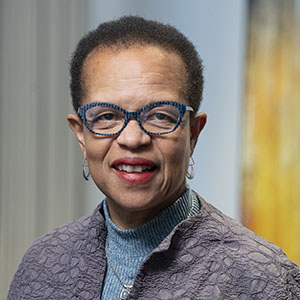Executive Summary
Related Content
Needle-Moving Community Collaboratives full report
12 Case Studies of Community Collaboratives
Guides: Needle-Moving Collective Impact
Needle Moving Community Collaboratives Revisited: Profiles in Persistence and Progress
HuffPost Impact Blog Series: A Community Bands Together to Save Itself, Part 1, Part 2, and Part 3
Communities face powerful challenges—a high-school dropout epidemic, youth unemployment, teen pregnancy—that require powerful solutions. In a climate of increasingly constrained resources, those solutions must help communities to achieve more with less. A new kind of community collaborative—an approach that aspires to significant community-wide progress by enlisting all sectors to work together toward a common goal—offers enormous promise to bring about broader, more lasting change across the nation.
In December 2010, President Obama created the White House Council for Community Solutions to demonstrate the power of engaging “all citizens, all sectors working together.” The Council decided to look beyond individual programs showing success with limited populations and instead examine communities that are solving problems together and moving the needle in a way that improves results for the whole community.
The Council worked with The Bridgespan Group to identify effective needle-moving collaboratives (those that have achieved at least 10 percent progress in a community-wide metric), understand the keys to success, and recommend ways to drive more collective impact, particularly to address the challenges of disconnected youth. We identified 12 collaboratives, many of which are focused on helping disconnected youth, such as the Milwaukee teen pregnancy prevention initiative, Philadelphia’s Project U-Turn, and the Strive Partnership of Cincinnati and Northern Kentucky, among others, that have made needle-moving progress in their communities. In addition to sharing a commitment for change, we found that these collaboratives had four operating principles in common:
- Commitment to long-term involvement;
- Involvement of key stakeholders across sectors;
- Use of shared data to set agendas and improve results over time;
- Engagement of community members as substantive partners.
Looking deeper, we discovered five core elements that contributed to their success:
- Shared vision and agenda, in which leaders from government, nonprofit, philanthropy, and business develop measureable community-wide goals and a clear roadmap to achieving them;
- Effective leadership and governance, with highly respected leaders at the helm who are viewed as neutral, honest brokers and who attract and retain a diverse group of large and small organizations to guide the collaborative forward;
- Alignment of resources toward what works, where nonprofits, government, philanthropy, and business work together to target efforts and resources toward the most effective approaches and services;
- Dedicated staff capacity and appropriate structure to provide the facilitation, data analyses, and administration needed for success;
- Sufficient funding, which requires funding to maintain staff and invest in the strategic priorities of the collaborative.
This report provides more details about these characteristics and shares short case examples that explore in depth how various collaboratives have achieved collective impact. It also looks at five key resources that could catalyze community collaborative success.
Michele Jolin is a member of the White House Council for Community Solutions and a senior fellow at the Center for American Progress. Paul Schmitz is a member of the White House Council for Community Solutions and CEO of Public Allies. Willa Seldon is a partner at The Bridgespan Group.
Archived Comments
This work is fascinating and important.
In the Uk, the network of Community Foundations was asked by our national lottery to invest USD 75m in what they considered to be the least advantaged and lowest capacity communities in the UK to strengthen those communities capacities over a ten year period. I wish that we had this report when we designed the programme.
What we learned was that change was most manifest when we insisted that panels of local people agreed on a common approach and built the necessary linkages between the non-profits and when we communicated what was going on so that other resources were mobilised and culture was shifted. I see parallels here with some of the conclusions in the report.
Has anyone presented this report in the UK? We have a national conference of community foundations this year and I'd be really interested to see if we could get someone over to share first hand.
Stephen Hammersley
CEO UK Community Foundations



